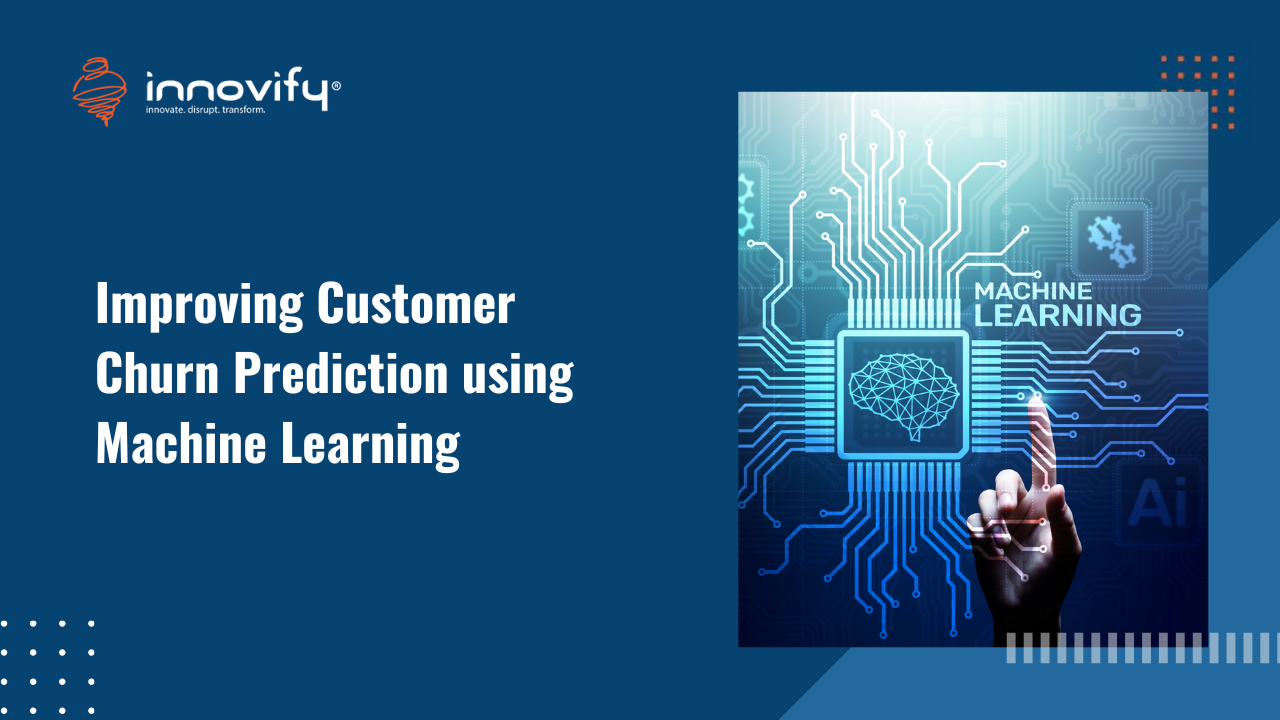AI/ML
6 DevOps Security Best Practices to Adopt in 2023
6 DevOps Security Best Practices
In the fast-paced world of technology, organizations are under constant pressure to deliver software faster and more efficiently. But, with this increased speed, the risk of security vulnerabilities also increases.
DevOps, a combination of development and operations, has revolutionized how organisations deliver software. Yet, security is often an afterthought. Installing security best practices early in the development process is essential to protect sensitive data and systems.
DevOps teams must balance the need for speed with the need for security, which can be a challenging task.
In this blog, we’ll explore some of the top DevOps security practices that’ll help you keep your software secure while maintaining a rapid pace of delivery. Get ready to take your DevOps game to the next level with increased security and reduced risk.
DevOps Security: An Overview
DevOps Security is integrating security measures into the software development and operations processes. It aims to ensure that the software is secure and complies with security standards at every stage of the development and deployment cycle. This includes code reviews, security testing, incident response, and continuous monitoring.
DevOps Security seeks to balance the speed and agility of DevOps. It fulfils the need for robust security measures to prevent breaches and ensure data privacy.
By embedding security into the DevOps process, organizations can ensure that they consider security throughout the entire software lifecycle. It’ll reduce the risk of vulnerabilities and improve security posture.
Importance of DevOps security
The importance of DevOps security can be summarized as follows:
1. Integration with DevOps process: DevOps security is integrated into the software development and operations process, ensuring that security is considered at every stage of the software lifecycle. This helps to reduce the risk of vulnerabilities and ensure the security of the software.
2. Improved security posture: By incorporating security into the DevOps process, organizations can improve their security posture and reduce the risk of breaches. This includes code reviews, security testing, and continuous monitoring.
3. Faster resolution of security issues: DevOps security allows organizations to identify and resolve security issues, minimizing the impact of security incidents. This is achieved through the use of automated tools and processes that are integrated with the DevOps pipeline.
4. Compliance with security standards: DevOps security helps organizations follow industry standards such as PCI-DSS, HIPAA, and SOC 2, which can be challenging to meet through traditional security approaches.
DevOps Security Challenges
DevOps has become an integral part of the software development lifecycle, allowing organizations to deliver software faster and more. But, with the increased speed of software delivery comes the increased risk of security vulnerabilities.
Some of the security challenges include:
1. Not enough time for security
One of the biggest challenges in DevOps security is the lack of time and resources. With the emphasis on speed, security is often seen as a secondary concern, and teams may not have enough time to address security issues. This can lead to vulnerabilities being introduced into the software, which can be difficult and time-consuming.
2. Cloud Security
The use of cloud-based services has become common in DevOps, and while it offers many benefits, it also brings new security challenges. Cloud environments can be complex and difficult to secure, and organizations may not have full visibility and control over them.
3. Risky toolset
DevOps teams rely on a range of tools to deliver software, and some may contain security vulnerabilities. Using tools with known security vulnerabilities can introduce risk into the software development process and compromise systems and data security.
4. Weak access controls
In DevOps, access controls are critical, as they determine who has access to sensitive data and systems. Weak access controls can lead to unauthorized access, resulting in data breaches and other security incidents.
6 DevOps Security Best Practices to Enhance Your Security
1. Adopting DevSecOps Model
A comprehensive DevSecOps approach is necessary for ensuring security in DevOps processes. Successful security integration throughout the DevOps cycle requires collaboration between all teams, emphasizing a culture where security is everyone’s responsibility.
DevSecOps is a model that aims to integrate security into the DevOps process, making security a priority at every stage of the software development life cycle. It involves collaboration between developers, operations, and security teams to ensure that security is considered and addressed. This can help organizations detect and fix security issues before they become bigger problems.
2. Using Penetration Testing and Automated Security Testing
Penetration testing and automated security testing are two important security practices that organizations should adopt to help secure their software systems. Penetration testing involves attempting to find and exploit vulnerabilities in software systems.
Organizations shifting to DevSecOps should conduct penetration testing of their development environments to pinpoint security vulnerabilities. While manual penetration tests can be useful for the early stages of the DevSecOps transition, they can hinder the development process and slow it down.
For complete security integration into the development process, it is crucial to implement automated security testing to identify issues such as defects, data breaches, and vulnerabilities as they are introduced into the pipeline. These tests should be conducted frequently to give developers immediate feedback on security flaws and guidance on how to fix them.
3. Setting up Security Policies
Organizations should establish and enforce security policies that guide software systems’ secure development and deployment. This can include policies for secure coding, data protection, access management, and incident response.
Clear security policies can help organizations ensure that their software systems are secure and comply with regulations and industry standards.
4. Leveraging Automation
Automation can help organizations streamline their security processes and reduce the risk of human error. Also, it’s essential for scaling and quickening security operations to align with the speed of DevOps processes.
Automating security processes such as configuration management, code analysis, vulnerability detection and remediation, and privileged access management is necessary to identify security weaknesses on time without hindering the pipeline.
Automation saves time and allows developers and security teams to concentrate on higher-priority tasks.
5. Using Vulnerability Management
Implement a system that can scan, assess, and rectify vulnerabilities throughout the software development life cycle, guaranteeing that code is secure before deployment. Even after deployment, operations and security teams must continue performing tests in testing, staging, and production environments to detect vulnerabilities.
Vulnerability management is identifying, tracking, and remedying security vulnerabilities in software systems.
Organizations should use vulnerability management tools and processes to track their software systems for vulnerabilities and remediate them on time. This can help organizations reduce the risk of attacks and ensure that their software systems are secure.
6. Enabling Access Management
Access management is the process of controlling who can access software systems and what they can do with them.
Organizations should enable access management to help ensure that sensitive information is protected and that only authorized users have access to software systems. Access management can include measures such as user authentication and authorization and logging and monitoring access to software systems.
For instance, always avoid using “super user” accounts and limit developer and tester access to only their relevant work areas. Grant “in time” access to critical systems and revoke it actively. Keep privileged credentials stored and monitor privileged sessions for any suspicious activity.
Take the first step towards a secure and successful DevOps journey
DevOps and security teams both have a lot to gain from each other. DevOps teams can deliver, while the security team can ensure those systems remain secure. The best way for these teams to work together is through communication and collaboration throughout the development lifecycle.
By working this way, they’ll avoid common mistakes in integration and understand how their continuous delivery pipeline and security requirements need to fit together.
If you’re looking for top-notch DevOps services, Innovify is your go-to provider. Our team of DevOps experts is equipped to handle all your needs and help you reach your DevOps goals quickly and efficiently. Don’t wait any longer to streamline your development process – partner with Innovify today!
FAQs
1. What should your team consider when doing security in DevOps?
When doing security in DevOps, the team should consider various factors such as continuous integration, deployment, and automation. They should have a well-defined process for handling security vulnerabilities, access management, and ensuring secure communication between different system parts.
2. What are the 4 P’s in security?
The four P’s in security are people, processes, policies, and technologies. People are individuals with access to the data and systems that ensure their security. Processes are the procedures and protocols to prevent, detect, and respond to security threats. Policies are guidelines and rules governing the use of technology and the protection of data and systems. Technologies refer to the hardware and software tools for security measures, such as firewalls, encryption, and intrusion detection systems.
3. What are the 5 D’s of security?
The 5 Ds of perimeter security work in unison to create a barrier around your assets, like an onion with many layers. By deterring, detecting, denying, delaying, and defending potential threats, you give yourself the time and opportunity to mount an effective response.
4. How do you ensure security in DevOps?
Security is essential to DevOps pipelines, and the best way to achieve it is to adopt a full DevSecOps model. Integrating security across the DevOps lifecycle requires cross-functional collaboration, with everyone responsible for security.



